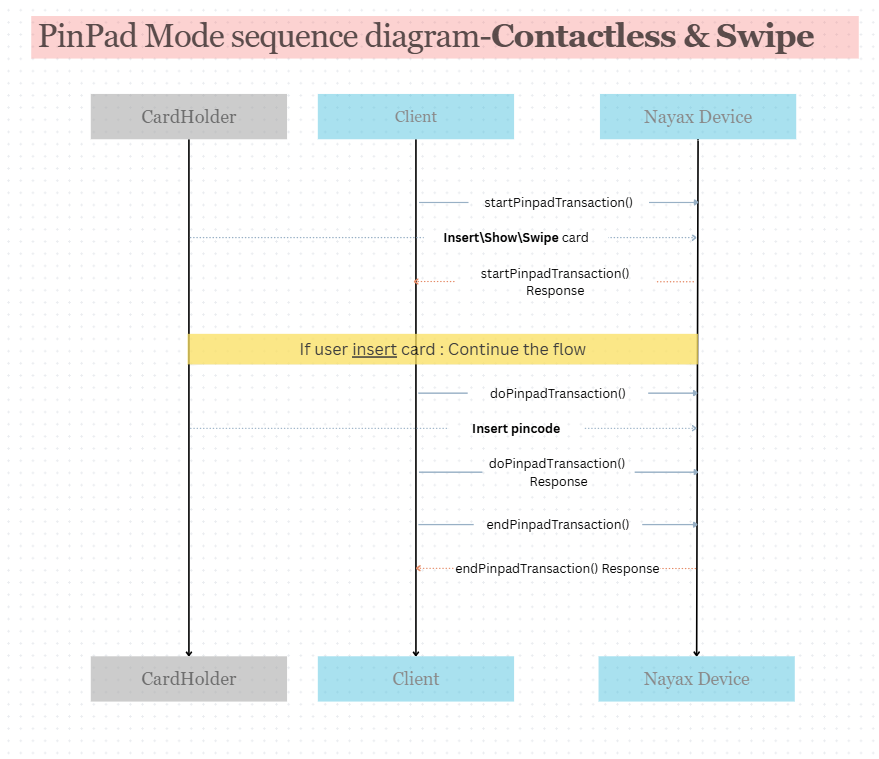PinPad Mode
The TweezerComm protocol allows you to use the device in pin-pad mode. In this mode, you can read the card details and use the EMV tags and data to create your own transaction object
Pinpad Mode Flow
The diagram below illustrates the steps involved in using the TweezerComm methods to handle card presentation and PIN entry on a Nayax Device, focusing on Contactless and Swipe transactions.

Here's a breakdown of each step of the flow:
- The client application sends a
startPinpadTransaction()Request to the Nayax Device to prepare it for a card-based transaction. - The Nayax Device responds with a
startPinpadTransaction()Response and then begins to display a prompt for the CardHolder to Insert, Show, or Swipe card. - The CardHolder physically presents their card by inserting, swiping, or tapping it on the Nayax Device.
- If the CardHolder inserts the card (triggering the need for a PIN), the flow continues with the Client sending a
doPinpadTransaction()Request to prompt for the PIN input. - The CardHolder enters their PIN directly on the Nayax Device. The device responds to the client with the
doPinpadTransaction()Response after the PIN is captured. - Once the necessary card and PIN data are securely captured, the Client sends an
endPinpadTransaction()Request to the Nayax Device. - The Nayax Device confirms the PinPad process is complete the
endPinpadTransaction()Response, returning the device to an idle state.
Updated 1 day ago